Blog
The Pursuit Of Balance – Part 3

This blog post is the third part of a series titled “The Pursuit of Balance”. We strongly suggest you read parts one and two, as they will provide background information about what balance is, how to determine if it’s lacking in your life, and some useful tools which can help bring balance into your life. Please click here to view those posts:
What are some tools to help me lead a more balanced life?
In part two of our series on pursuing balance, we discussed how meditation, acupuncture, and “being present” can help provide peace and harmony. We would like to provide additional tools and resources to assist those who are looking for methods to gain balance in their lives.
The practice of yoga is an extremely helpful tool that can be used by individuals of all ages and skill levels. There are numerous types of yoga that have been designed to appeal to people from all walks of life. Yoga has become mainstream—gaining popularity and growing exponentially throughout the world.
So what exactly is yoga? Yoga is an ancient Indian body of knowledge that dates back more than 500 years. The word “Yoga” came from the Sanskrit word “yuj” which means “to unite or integrate.” Yoga, then, is about the union of a person’s own consciousness and the universal consciousness. [Link] The practice of yoga was developed to help achieve and maintain balance through exercise, breathing and meditation. These are the three primary yoga components.
Stillness—or the practice of being still, is a tool that can be used to help provide balance and peace. It’s important to differentiate stillness from meditation, as these two practices can be easily confused. Being still doesn’t mean that you’re in a meditative state; it does mean that you are spending time being centered, present and mindful without the need to be doing something. Stillness is the art of being where you’re at, without movement or external stimulus—just being present in the moment. You can “be still” at home on the couch, outside communing with nature, sitting on a park bench, or really anywhere. Most people are always moving around, having to go somewhere or doing something. It’s important to just be still—to sit and be with yourself, by yourself, finding peace within yourself.
Nutrition is not only a useful tool when seeking balance; it is the foundation for healthy living. In two previous blog posts, we wrote about how important it is to eliminate gluten and dairy. Both of these components add stress and can potentially create a toxic internal environment. The elimination of both dairy and gluten should be considered priorities when making nutritional improvements. Once they are fully removed the body will perform better. We also suggest reducing—and possibly eliminating—the consumption of high fructose corn syrup and refined sugars. These elements are poor sources of energy for the body and should be avoided. There is a large variety of options that exist to replace them—all of which are more nutritious and healthy.
One thing we wanted to note is the importance of not simply selecting one tool and hyper-focusing on it as your source of balance. By employing many different practices and methods, a greater sense of harmony can be achieved in a more holistic manner. It’s important to find out which ones work best and feel most comfortable, and then to incorporate them into your daily routine.









